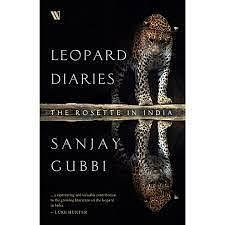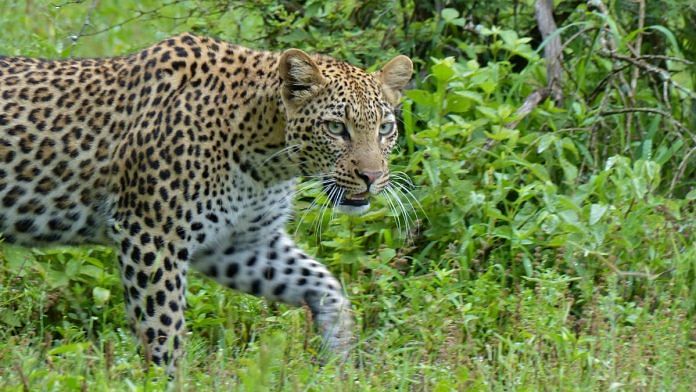Tigers, lions, leopards, great white sharks, crocodiles, and a few other species have gained infamy and are seen from a very different lens of fear when they, on occasion, consume the meat of people. At times, their attacks are even deliberate. Termed ‘man-eaters’, some of these species have been the epicentre of Hollywood blockbusters.
Movies such as Steven Spielberg’s Jaws, its three sequels, and The Ghost and the Darkness, a fictionalised account of the Tsavo man-eating lions that killed workers in Kenya during the building of the Lake Victoria– Mombasa railway line in 1898, have shaped popular perceptions, injecting fear about large carnivores into the hearts of people. But there has never been a film or a book about human-trampling elephants, which possibly kill nearly 600 people a year in India which is possibly five times higher than the number of people killed by all large carnivores.
Though leopards have a bad reputation of being man-eaters in India, the same does not apply to them in some of the other regions where they occur. In the Indonesian island of Java, leopards hardly ever kill humans, and attacks on humans mostly date back to the 1920s. Peter Boomgaard, a professor of environmental history and the author of the book Frontiers of Fear: Tigers and People in the Malay World, 1600-1950, documents that between 1882 and 1904, 317 people were killed by leopards in India and none in Indonesia.
The most common explanation given for the difference between lethality to humans in the Indian leopard, where maneating seems to be more prevalent, and the Javan leopard is that the Indian leopard is bigger than its Javan counterpart. It is also believed that the Javanese killed, with their daggers, any leopard that attacked them, while Indian villagers did not defend themselves against leopards, which might have reinforced the inclination that humans were fair game.
Also read:
Indonesia, however, witnessed a high number of human killings by tigers, in what were often referred to as the ‘tiger plagues’ or ‘tiger epidemics’. In India, Col. James Edward Corbett, popularly known as Jim Corbett, became a legend by ridding local people of the menace of large predators—tigers and leopards—that were killing people. Corbett was an Indian-born, British hunter-turned-conservationist, author, naturalist and possibly the man who coined the term ‘man eater’. A similar, larger-than-life figure existed in southern India: Kenneth Douglas Stewart Anderson, Kenneth Anderson in short.
While Jim Corbett hunted mostly in the north and was associated with tigers and leopards, Kenneth Anderson, the celebrated, licensed hunter from southern India, was associated with the killing of tigers, leopards, sloth bears and elephants. Though many have questioned Anderson’s credentials, he remains one of the most acclaimed hunter-naturalists from his era.
Both these men from the Raj period shot to prominence due to their ability to reduce the incidence of human deaths at the hands of large cats, something we today know as human-wildlife conflict. Both the hunters’ stories gave birth to a kind of thrilling ‘shikaar’ literature that finds readers even to this day in India. David Quammen, the acclaimed science and nature writer, calls such genre of literature as ‘marketing of zoological melodrama’ and ‘predator pornography’ in his book Monster of God.
Also read: This orphan hyena cub had 2 options – zoo or death. We raised her to be wild
In his books, Jim Corbett attributes man-eating to a variety of reasons, including traditional rituals where human bodies were disposed of without burying or burning. When epidemics swept villages in the Kumaon and Garhwal hills in present-day Uttarakhand, the casualties were high and frequent. At such times, villagers were forced to keep rituals simple and often carried the bodies to the edge of a hill, put embers in the mouth, and cast the dead bodies into the valley below, rather than carry it to the riverbank for cremation.
In areas where natural food was scarce, leopards scavenged on these bodies and acquired a taste for human flesh. According to Corbett, once the disease died down and normal conditions were re-established, this food supply for the leopards was cut off, and they took to killing humans. He writes that during the reign of two of the man-eating leopards in Kumaon and Garhwal, which killed 525 people between them, one man-eating spree followed on the heels of a very severe outbreak of cholera, and the other followed a mysterious disease called ‘war fever’, which swept through India in 1918 and cost over a million human lives.
The man-eating leopard from Garhwal came to be known as the man-eater of Rudraprayag, since it began its man-eating career at a small village near the town of Rudraprayag. It was one of the most publicised animals, and was mentioned in the press in the UK, USA, Canada, South Africa, Kenya, Malaysia, Hong Kong, Australia, New Zealand and, of course, in many dailies and weeklies in India. Its reign of terror went on for nearly nine years, and it killed 125 people before Corbett eliminated it on 2 May 1926.
The mango tree on which Corbett was sitting when he eliminated the Rudraprayag leopard continues to stand as a witness to the incident, and a concrete stele stands at the location where the leopard is supposed to have been killed. In the year 1907, another notorious renegade that came to be known as the Panar man-eater, named after the river in the area, is said to have killed four hundred people. After a futile attempt in April 1910, Corbett was able to rid people of this man-eater during his second attempt in September of the same year.
There were several other leopards that carried names, such as the maneater of Basim, the Nanda man-eater, the Gunsore man-eater, the Khandesh man-eater and the killer of Jalahalli. They were all killed by white colonial hunters who were part of a kind of boy’s adventure club, with members including Kenneth Anderson, J.D. Inverarity, W.A. Conduitt, L.S. Osmaston and T.R.D. Bell. R.G. Burton, a British military officer and a hunter, suspected that leopards turned to man-eating partly due to ‘circumstantial temptations’.
 This excerpt from Sanjay Gubbi’s ‘Leopard Diaries : The Rosette in India’ has been published with permission from Penguin Random House India.
This excerpt from Sanjay Gubbi’s ‘Leopard Diaries : The Rosette in India’ has been published with permission from Penguin Random House India.






